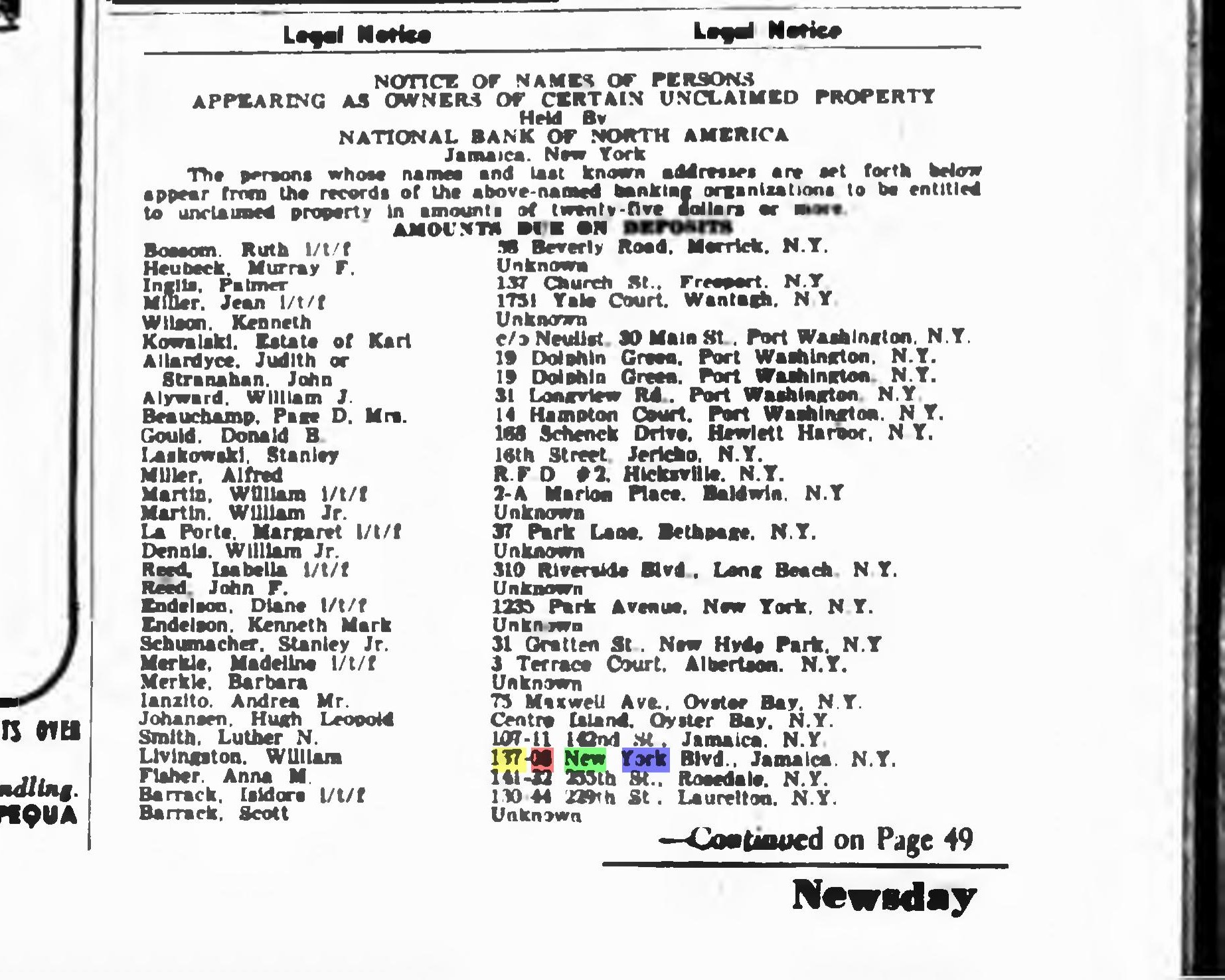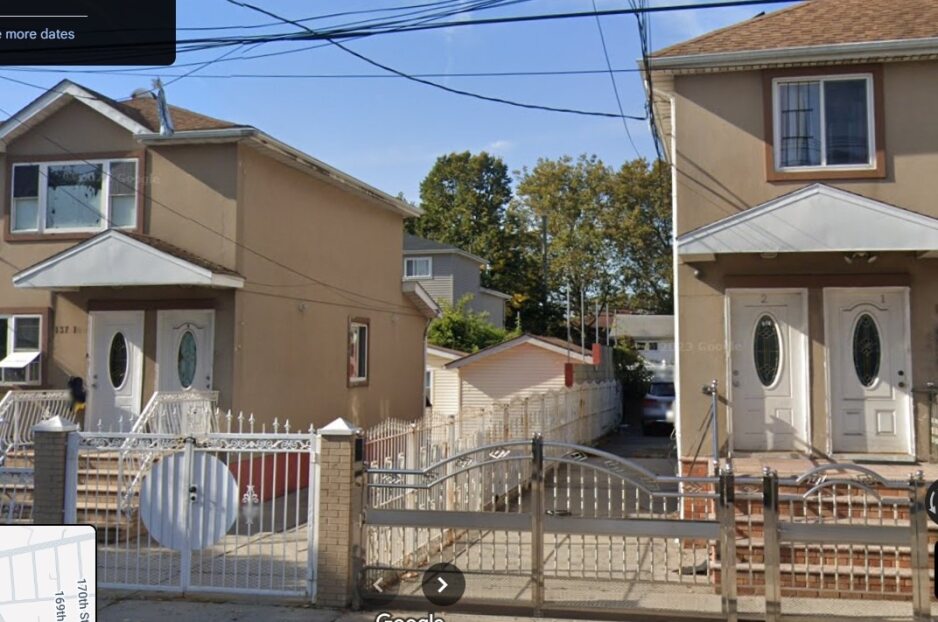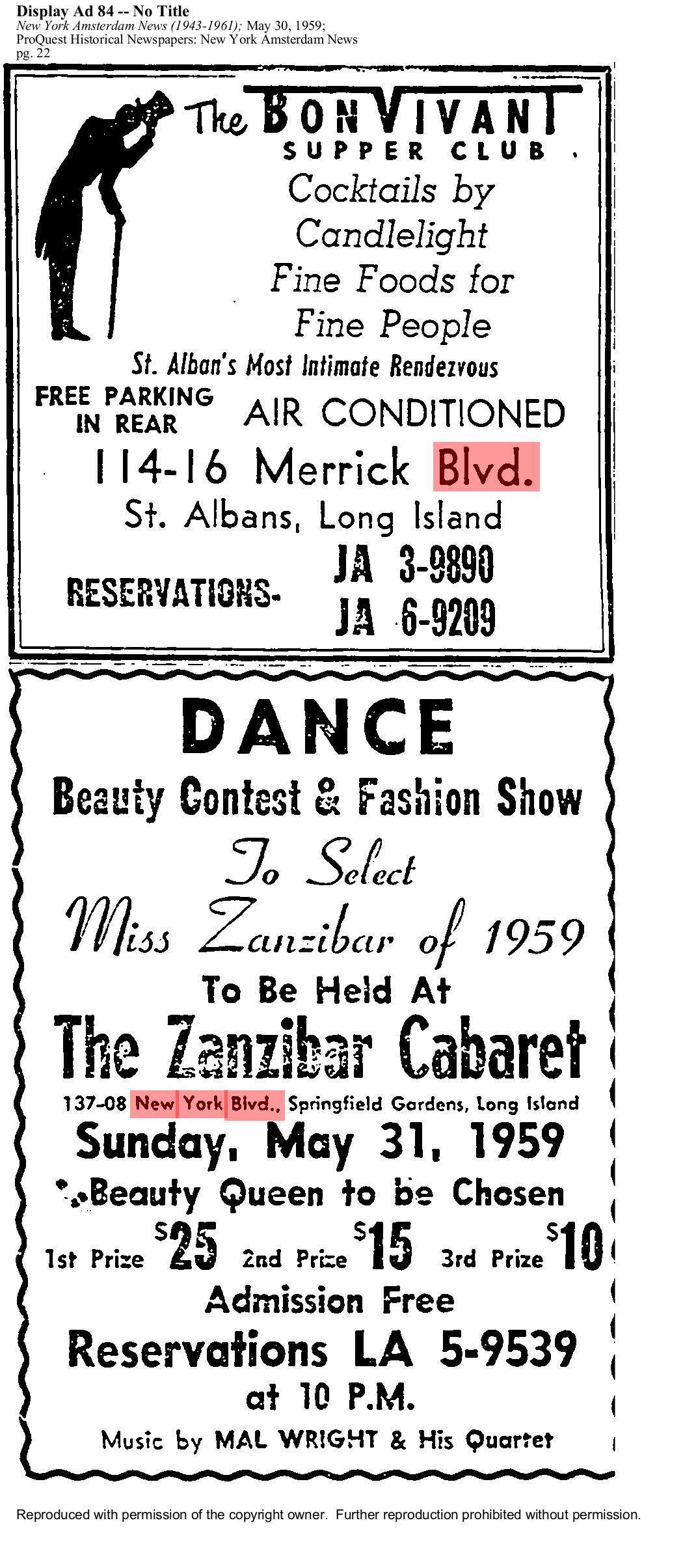Club Zanzibar

Article in Nassau Newsday, 1967, listing 137-08 New York Blvd as "unclaimed property".
Known Name(s)
Club Zanzibar
Address
137-08 New York Blvd. Springfield Gardens, NY
Description
At this time, no documentation regarding the construction or layout of 137-08 New York Boulevard has been found. However, some inferences can be made based on the various businesses that occupied the building over the years. 137-08 NY Blvd was constructed between 1912, the year of the most recent Sanborn Fire Insurance map available online, and 1948, when the address was first mentioned in a newspaper. In 1948, it was home to Karl’s Inn. By 1959, Club Zanzibar took up residence in the building. Club Zanzibar was likely evicted when the property was deemed “unclaimed” in 1967. The last known reference to the property is an advertisement for Leo’s Driving School in 1976.
137-08 New York Boulevard was demolished at an unknown date. The plot of land it once occupied is difficult to identify definitively, but it likely sat between 137-06 and 137-10 Guy R Brewer Boulevard (formerly New York Boulevard). Both properties were constructed in the early 2000s, so the exact size of Club Zanzibar’s plot is difficult to determine.
Detailed History
Club Zanzibar was a popular nightclub in the Queens neighborhood of Springfield Gardens in the late 1950s and 1960s. It advertised frequently in the prominent Black-owned newspaper New York Amsterdam News during this period, boasting a robust rotation of jazz musicians. Ed Taylor was the proprietor of the club in 1959.
By 1967, it seems the good fortunes of the club had turned – 137-08 New York Boulevard was listed as an “unclaimed property” by the National Bank of North America. The owner of the property at this time was reportedly William Livingston.
Club Zanzibar operated during a time of rapid demographic transition for the neighborhoods of South Jamica and Springfield Heights. Urban renewal was in full swing, and efforts to mitigate white flight were rapidly changing the landscape of the neighborhoods.
Just up the road from Club Zanzibar, practically across the street, the massive Rochdale Village Housing Cooperative epitomized the seismic changes occurring in the area. Completed in 1963, the modern “city in a park”-style residences were intended to provide affordable housing for the neighborhood’s burgeoning population and were supposed to staunch the flow of middle-class families fleeing the city. Despite the majority-Black population of South Jamaica, Rochdale’s first residents were mostly white. One can imagine that the simmering racial tensions in the neighborhood made their way into Club Zanzibar.





